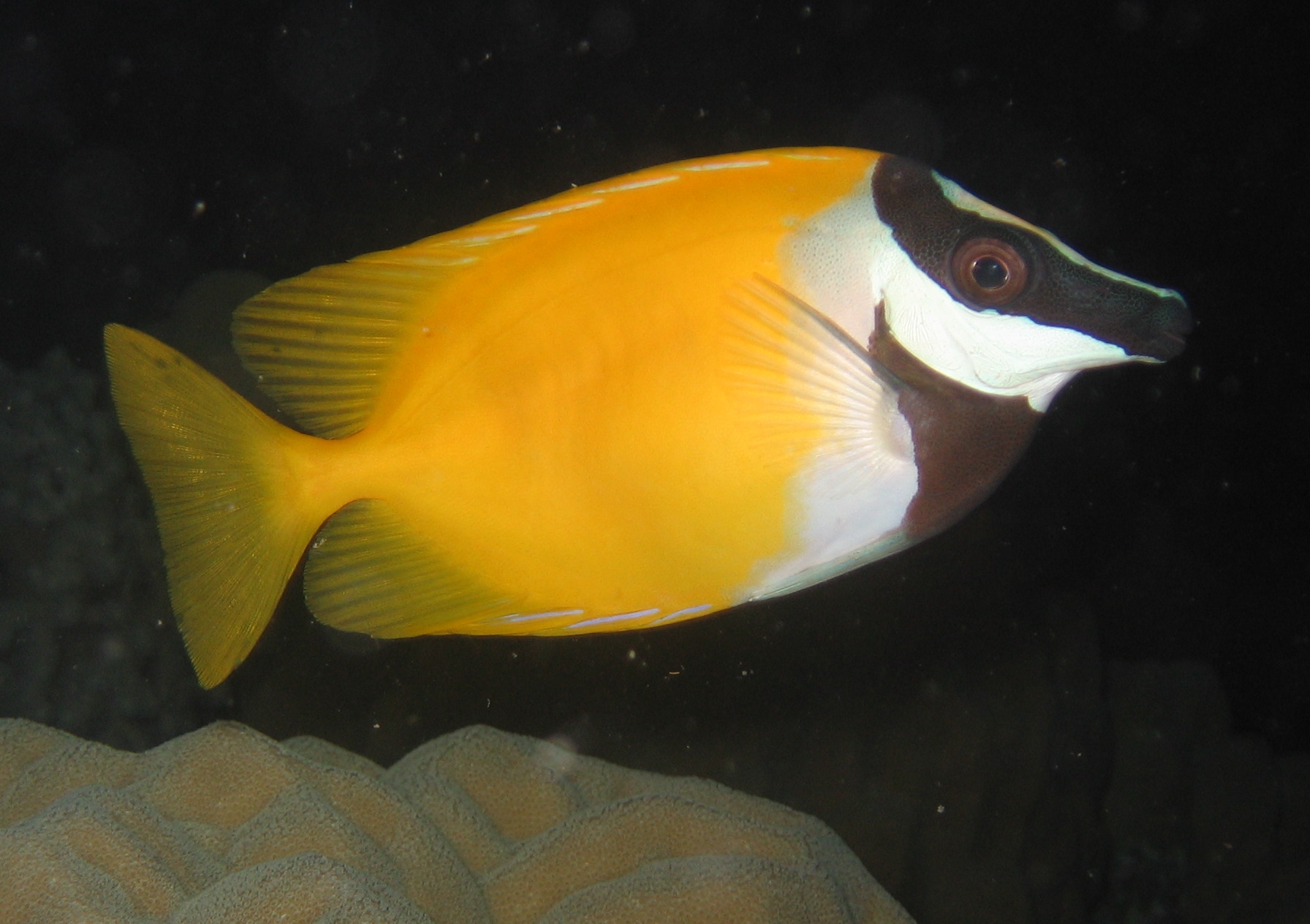- Foxface rabbitfish
Taxobox
name = Foxface Rabbitfish

image_width = 240px
image_caption = Adult, day color
regnum =Animal ia
phylum = Chordata
classis =Actinopterygii
ordo =Perciformes
familia =Siganidae
genus = "Siganus "
species = "S. vulpinis"
binomial = "Siganus vulpinus"
binomial_authority = (Schlegel & Müller, 1845)
synonyms ="Amphacanthus vulpinus" Schlegel & Müller, 1845
"Lo vulpinus" (Schlegel & Müller, 1845)The Foxface Rabbitfish ("Siganus vulpinus") is a popular
saltwater aquarium fish. It belongs to therabbitfish family (Siganidae) and is sometimes still placed in the obsoletegenus "Lo". Other common names are "foxface" or "foxface Lo", but these properly refer to any of the rabbitfishspecies once separated in "Lo", e.g. the closely related [Kuriiwa "et al." (2007)]Bicolored Foxface ("S. uspi"). The Foxface Rabbitfish lives throughout the westernPacific , often inhabiting coral reefsFishBase (2008)] .The
Blotched Foxface ("S. unimaculatus") differs from "S. vulpinus" in possessing a large black spot below the aftdorsal fin . It issympatric and notphylogenetic ally distinct, and though these two might be recently-evolved species, they are more likely just color morphs and ought to be united under the scientific name "S. vulpinus". [Kuriiwa "et al." (2007), FishBase (2008)]Description
The Foxface Rabbitfish is a bright yellow medium-sized fish, usually attaining an average size of 23 cm (9 in) in length. The head and front portion of its body is striped black-brown and white. They retain this bright coloring throughout the day, and during the night or when stressed, like many other fishes, they have the ability to change into a mottled dark brown color [See e.g. FishBase (2008) for photo] . This is most likely used as a camouflage against predators, and upon waking, their bright colors almost immediately return. They have a long snout-like mouth that is used for feeding on
alga e and other vegetation, with the snout being particularly handy for reaching into crevices.Caution should be used with this fish: like in all rabbitfishes, all of the dorsal, pectoral and
anal fin s have venomous spines. A wound from any of them can be, at the least, very painful. To prevent injury when working in an aquarium with a rabbitfish, it is a good idea to wear thick rubber gloves or somehow isolate it to one side of the aquarium temporarily. Despite the danger of the venomous fins, the Foxface Rabbitfish is generally timid and will usually retreat behind some rocks when approached or you stick your arm in an aquarium. Most injuries occur when people attempt to handle the fish without wearing gloves or stick their hand in the aquarium while feeding.Food
"Siganus vulpinus" is omnivorous but enjoys algae and other marine plant life. From time-to-time, if hungry, it may nip at
coral s likeZoantharia (zoanthids and button polyps). Though not an obligateherbivore , the Foxface Rabbitfish does require algae in its diet. In captivity it can usually be coaxed into eating a combination ofmysis shrimp , sheets of driedseaweed and marineflake food containing algae. It is popular with aquarists due to its appetite for feathercaulerpa s ("Caulerpa crassifolia ", "C. mexicana", "C. sertularoides"), macroalgae that commonly overgrow the rockwork in home aquariums. "S. vulpinus" is highly skilled at removing this alga and will generally clear an aquarium of it within a matter of days.Footnotes
References
* (2008): [http://www.fishbase.org/Summary/SpeciesSummary.php?id=4629 Siganus vulpinus - Foxface] . Version of 2008-JAN-14. Retrieved 2008-AUG-31.
* (2007): Phylogenetic relationships and natural hybridization in rabbitfishes (Teleostei: Siganidae) inferred from mitochondrial and nuclear DNA analyses. "Mol. Phylogenet. Evol." 45(1): 69–80. doi|10.1016/j.ympev.2007.04.018 (HTML abstract)
Wikimedia Foundation. 2010.
